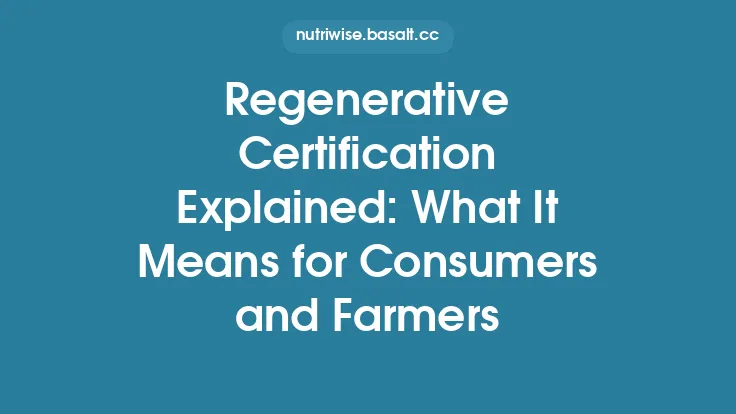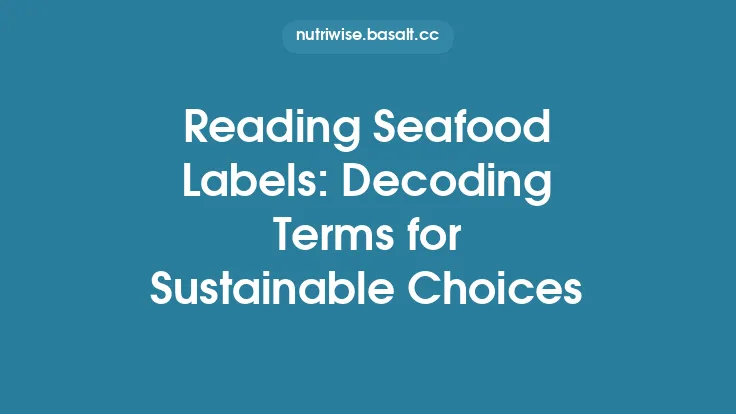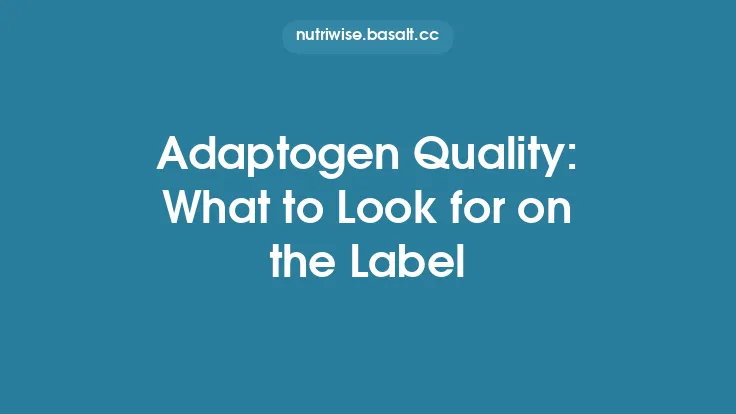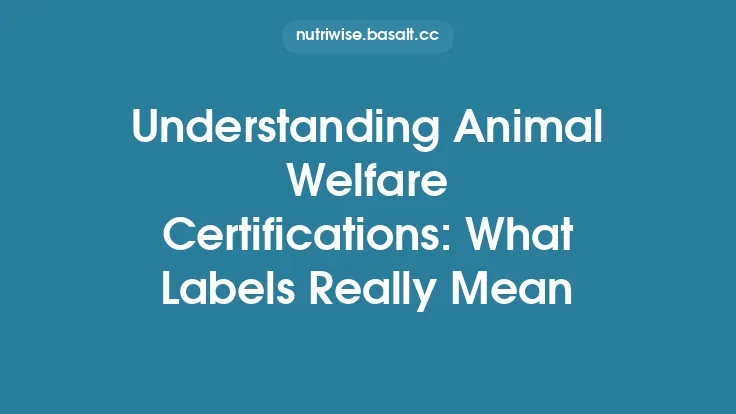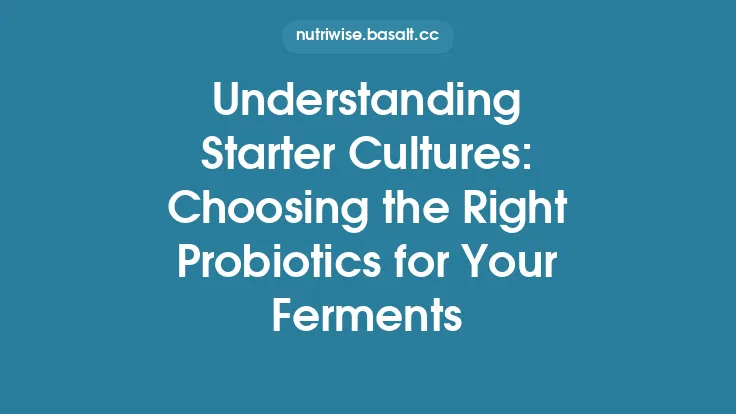The Marine Stewardship Council (MSC) has become one of the most recognizable symbols of sustainability in the seafood industry. When you see the blue MSC label on a package of salmon, a can of tuna, or a frozen shrimp bag, it signals that the product has met a rigorous set of standards designed to protect ocean ecosystems while supporting viable fisheries. Understanding what MSC certification entails, how it is awarded, and what it truly means for the seafood on your plate can empower you to make choices that align with both health and environmental stewardship.
What the MSC Certification Represents
MSC certification is a third‑party verification that a fishery operates in a manner that is environmentally responsible, socially acceptable, and economically viable. The program is built around three core principles:
- Sustainable Fish Stocks – The fishery must harvest at a level that does not compromise the long‑term health of the target species or the broader ecosystem.
- Minimizing Environmental Impact – Fishing practices must avoid or mitigate damage to habitats, reduce bycatch, and limit other adverse effects on marine life.
- Effective Management – The fishery must be governed by a transparent, accountable management system that can adapt to new scientific information and changing conditions.
Only when a fishery satisfies all three principles does it become eligible for MSC certification, and the product can bear the MSC ecolabel.
The Certification Process: From Assessment to Audit
1. Pre‑Assessment and Scoping
Before a formal audit, the MSC’s independent assessors conduct a scoping review to determine which parts of a fishery need evaluation. This step identifies the target species, fishing gear, geographic area, and any relevant management measures already in place.
2. Full Assessment Against the MSC Standard
The core of the certification process is a comprehensive assessment that examines:
- Stock Status – Scientific data on population dynamics, recruitment rates, and mortality are analyzed to confirm that the stock is not overfished and that fishing mortality is within sustainable limits.
- Impact on Ecosystems – Evaluators review bycatch rates, habitat interactions (e.g., seabed disturbance from trawling), and the fishery’s mitigation measures such as gear modifications or closed areas.
- Management Effectiveness – The assessment looks at legal frameworks, enforcement mechanisms, compliance monitoring, and stakeholder participation. It also checks whether the fishery has a robust plan for dealing with unexpected changes, such as climate‑driven shifts in species distribution.
3. Independent Audit
A team of MSC‑accredited auditors, independent of the fishery and the MSC organization, conducts an on‑site audit. They verify the data submitted during the assessment, interview fishers and managers, and observe fishing operations. The audit ensures that the fishery’s reported practices match reality.
4. Decision and Certification
If the audit confirms compliance, the MSC’s Technical Committee—comprising scientists, conservationists, and industry experts—votes on certification. Successful fisheries receive a five‑year certification, after which they must undergo a re‑assessment to maintain the label.
5. Chain of Custody (CoC) Certification
Beyond the fishery itself, every step in the supply chain—processing, distribution, retail—must be certified under the MSC Chain of Custody standard. This ensures that the product bearing the MSC label truly originates from a certified fishery and has not been mixed with non‑certified sources.
How MSC Certification Impacts the Marine Environment
Protecting Fish Populations
By limiting harvests to scientifically determined sustainable levels, MSC‑certified fisheries help maintain healthy stock structures. This reduces the risk of population collapse and supports the resilience of marine ecosystems.
Reducing Bycatch and Habitat Damage
MSC standards require fisheries to implement bycatch mitigation measures, such as selective gear, real‑time monitoring, and avoidance of sensitive habitats (e.g., coral reefs, seagrass beds). Over time, these practices have been shown to lower incidental catch rates and preserve essential marine habitats.
Encouraging Adaptive Management
Because the MSC framework mandates regular scientific review and adaptive management, certified fisheries are better equipped to respond to emerging threats—such as climate change, ocean acidification, or invasive species—by adjusting quotas, gear, or spatial closures as needed.
Benefits for Consumers
Transparent Information
The MSC ecolabel is globally recognized and subject to strict verification. When you purchase MSC‑labeled seafood, you have a clear, evidence‑based indication that the product meets high sustainability standards.
Confidence in Ethical Sourcing
MSC certification also incorporates social considerations, ensuring that fisheries respect labor rights, community interests, and local economies. This adds an ethical dimension to the environmental benefits.
Consistent Quality
Many MSC‑certified fisheries invest in best‑practice handling and processing to meet the Chain of Custody requirements. This often translates into higher product quality, better freshness, and improved taste.
Common Misconceptions and Criticisms
“MSC is Just a Marketing Tool”
While the MSC label does provide market differentiation, its credibility rests on a robust, science‑based assessment process and independent audits. The label is not a marketing gimmick; it is a verifiable certification that can be revoked if standards are not maintained.
“All MSC Products Are 100% Sustainable”
MSC certification ensures that the fishery meets sustainability criteria at the time of assessment. However, marine ecosystems are dynamic, and stock status can change. The five‑year re‑assessment cycle is designed to capture such changes, but consumers should stay informed about any updates or controversies surrounding specific fisheries.
“MSC Allows Overfishing in Some Cases”
The MSC standard explicitly prohibits overfishing. In rare instances where a fishery’s data are incomplete, the MSC may grant a provisional certification contingent on the collection of additional scientific information. This provisional status is transparent and subject to strict monitoring.
Verifying MSC Certification
Look for the MSC Logo
The blue MSC logo, accompanied by the fish species name, indicates that the product is MSC‑certified. The logo is trademarked, and misuse is legally prohibited.
Check the MSC Fishery Register
The MSC maintains an online database of all certified fisheries and their status. By entering the fishery name or product details, you can confirm whether the fishery is currently certified and view the latest audit reports.
Review the Chain of Custody Certification
Retailers and processors must display a separate MSC Chain of Custody label. This confirms that the product’s journey from sea to shelf has been tracked and kept separate from non‑certified sources.
Global Reach and Regional Variations
MSC certification is applied worldwide, covering a diverse array of fisheries—from small, community‑run coastal traps in the Pacific to large‑scale industrial trawlers in the North Atlantic. While the core standards are universal, the implementation can differ based on regional governance structures, data availability, and ecological contexts. For example:
- Developing Nations often receive technical assistance from MSC to build data collection capacity and strengthen management frameworks.
- Highly Managed Regions such as the European Union benefit from existing robust regulatory systems that align closely with MSC criteria, facilitating smoother certification pathways.
The Future of MSC Certification
Integrating Climate Resilience
As climate change reshapes marine ecosystems, MSC is evolving its standards to incorporate climate‑related risk assessments. Future certifications may require fisheries to demonstrate strategies for dealing with shifting species distributions and altered productivity.
Expanding Digital Traceability
Emerging technologies—blockchain, satellite monitoring, and electronic catch documentation—are being piloted to enhance traceability throughout the supply chain. These tools can provide consumers with real‑time verification of MSC provenance.
Collaborative Stewardship
MSC increasingly partners with other sustainability initiatives (e.g., the Aquaculture Stewardship Council, regional fisheries management organizations) to create holistic stewardship frameworks that address both wild capture and farmed seafood.
Practical Tips for Choosing MSC‑Certified Seafood
- Read the Label Carefully – Ensure the MSC logo is present and not merely a claim in the marketing copy.
- Cross‑Reference the Fishery – Use the MSC Fishery Register to verify the certification status of the specific fishery listed on the packaging.
- Consider the Whole Product – Look for additional certifications (e.g., organic, fair trade) that may complement MSC’s sustainability focus.
- Support Transparent Retailers – Choose stores that provide clear information about their sourcing policies and display MSC Chain of Custody certification.
- Stay Informed – Periodically check news updates or MSC’s website for any changes in certification status for fisheries you regularly purchase.
Conclusion
MSC certification offers a scientifically grounded, independently verified pathway for consumers to identify seafood that is harvested responsibly. By adhering to strict standards on stock health, ecosystem impact, and effective management, MSC‑certified fisheries contribute to the long‑term sustainability of marine resources. For shoppers seeking to align their dietary choices with environmental stewardship, the MSC label serves as a reliable beacon—guiding the selection of seafood that not only nourishes the body but also protects the ocean for future generations.
